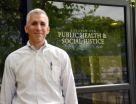(Press-News.org) Boston, MA – Calcium supplements are widely taken by women for bone health. Previous studies have suggested that calcium supplements may increase risk of cardiovascular disease, but the data has been inconsistent. A new study by researchers at Brigham and Women's Hospital (BWH) did not find that calcium supplement intake increases risk of cardiovascular disease in women.
The study is published online this month in Osteoporosis International.
Researchers examined supplemental calcium use and incident cardiovascular disease in a prospective cohort study of 74,245 women in the Nurses' Health Study. The women did not have cardiovascular disease or cancer at the start of the study. They were followed for 24 years to document risk of developing heart attack and stroke. Calcium supplement intake was assessed every four years.
"Our study has several distinct strengths compared to prior studies including the large number of participants, long-term follow-up, large number of cardiovascular events that were confirmed by medical record review, detailed information about diet and other cardiovascular disease risk factors, and repeated assessment of calcium supplement use over the 24-year follow up period," said Julie Paik, MD, MPH, BWH Channing Division of Network Medicine, Department of Medicine, lead study author.
The researchers found that at the start of the study, women who took calcium supplements had higher levels of physical activity, smoked less, and had lower trans fat intake compared to women who did not take calcium supplements. During the 24 years of follow-up, there were 2,709 heart attacks and 1,856 strokes.
"Based on our findings, additional prospective cohort studies examining potential cardiovascular disease risk associated with calcium supplement use are needed," said Paik. "Future randomized trials of calcium supplementation, if conducted, should be designed to optimize assessment of cardiovascular events."
INFORMATION:
This research was supported by the National Institutes of Health (HL092947, HL34594, HL088521, DK091417, DK100447 and CA087969).
Brigham and Women's Hospital (BWH) is a 793-bed nonprofit teaching affiliate of Harvard Medical School and a founding member of Partners HealthCare. BWH has more than 3.5 million annual patient visits, is the largest birthing center in Massachusetts and employs nearly 15,000 people. The Brigham's medical preeminence dates back to 1832, and today that rich history in clinical care is coupled with its national leadership in patient care, quality improvement and patient safety initiatives, and its dedication to research, innovation, community engagement and educating and training the next generation of health care professionals. Through investigation and discovery conducted at its Biomedical Research Institute (BRI), BWH is an international leader in basic, clinical and translational research on human diseases, more than 1,000 physician-investigators and renowned biomedical scientists and faculty supported by nearly $650 million in funding. For the last 25 years, BWH ranked second in research funding from the National Institutes of Health (NIH) among independent hospitals. BWH continually pushes the boundaries of medicine, including building on its legacy in transplantation by performing a partial face transplant in 2009 and the nation's first full face transplant in 2011. BWH is also home to major landmark epidemiologic population studies, including the Nurses' and Physicians' Health Studies and the Women's Health Initiative. For more information, resources and to follow us on social media, please visit BWH's online newsroom.
Calcium supplements not associated with increased risk of cardiovascular disease in women
2014-05-09
ELSE PRESS RELEASES FROM THIS DATE:
Study validates air sampling techniques to fight bioterrorism
2014-05-09
ST. LOUIS – Air and surface sampling techniques currently used by the US government are effective in fighting bioterrorism and potentially saving lives, a Saint Louis University researcher finds.
Results published in Biosecurity and Bioterrorism by Alexander Garza, M.D., MPH, former chief medical officer at the Department of Homeland Security and a team of researchers from Los Alamos National Lab reviewed the data from a series of experiments simulating a bioterrorism attack against the Pentagon. Garza is now the associate dean for public health practice and associate ...
New species of metal-eating plant discovered in the Philippines
2014-05-09
Scientists from the University of the Philippines, Los Baños have discovered a new plant species with an unusual lifestyle — it eats nickel for a living — accumulating up to 18,000 ppm of the metal in its leaves without itself being poisoned, says Professor Edwino Fernando, lead author of the report. Such an amount is a hundred to a thousand times higher than in most other plants. The study was published in the open access journal PhytoKeys.
The new species is called Rinorea niccolifera, reflecting its ability to absorb nickel in very high amounts. Nickel hyperaccumulation ...
Plants' oil-desaturating enzymes pair up to channel metabolites
2014-05-09
UPTON, NY-Plant scientists at the U.S. Department of Energy's Brookhaven National Laboratory have found that certain enzymes responsible for desaturating fatty acids, the building blocks of oils, can link up to efficiently pass intermediate products from one enzyme to another. "Engineering these enzyme interactions to channel metabolites along desired metabolic pathways could be a new approach for tailoring plants to produce useful products," said Brookhaven biochemist John Shanklin, lead author on a paper reporting the results in the Journal of Biological Chemistry.
Getting ...
Leadless pacemaker showing promising results after 1 year
2014-05-09
Vivek Reddy, MD, Director of Arrhythmia Services for The Mount Sinai Hospital, reported his promising12-month follow-up data showing the world's first leadless pacemaker is demonstrating overall device performance comparable to conventional pacemakers. Dr. Reddy presented the one-year LEADLESS study data findings during his late-breaking clinical trial presentation on May 9 at Heart Rhythm 2014, the Heart Rhythm Society's 35th Annual Scientific Sessions in San Francisco, CA.
The LEADLESS study's long-term follow-up has evaluated 32 patients with a slowed heartbeat, bradycardia, ...
Scientists decode epigenetic mechanisms distinguishing stem cell function and blood cancer
2014-05-09
Researchers at Dartmouth's Norris Cotton Cancer Center have published results from a study in Cell Reports that discovers a new mechanism that distinguishes normal blood stem cells from blood cancers.
"These findings constitute a significant advance toward the goal of killing leukemia cells without harming the body's normal blood stem cells which are often damaged by chemotherapy," said Patricia Ernst, PhD, co-director of the Cancer Mechanisms Program of the Norris Cotton Cancer Center and an associate professor in Genetics at the Geisel School of Medicine.
The study ...
Study identifies mechanism by which intestinal enzyme maintains microbial balance
2014-05-09
Massachusetts General Hospital (MGH) investigators have identified the mechanism by which an enzyme produced in the intestinal lining helps to maintain a healthy population of gastrointestinal microbes. In their report in American Journal of Physiology – Gastrointestinal and Liver Physiology, the research team describes finding that intestinal alkaline phosphatase (IAP) promotes the growth of beneficial bacteria by blocking the growth-inhibiting action of adenosine triphosphate (ATP) – an action first described in this paper – within the intestine.
"We found that ATP ...
NASA sees system 90E just after earthquake hit Mexico's Guerrero State
2014-05-09
VIDEO:
This movie of imagery from NOAA's GOES-West satellite from May 7 at 14:15 UTC to May 9 at 14:15 UTC shows System 90E's progression and movement on land in southwestern...
Click here for more information.
As the dissipating tropical low pressure system known as System 90E continued rain on Guerrero State in southern Mexico, the U.S. Geological Survey reported a 6.4 magnitude earthquake occurred there on Thursday, May 8 around noon local time (1 p.m. EDT). NASA's Aqua satellite ...
Bioprinting a 3D liver-like device to detoxify the blood
2014-05-09
Nanoengineers at the University of California, San Diego have developed a 3D-printed device inspired by the liver to remove dangerous toxins from the blood. The device, which is designed to be used outside the body -- much like dialysis – uses nanoparticles to trap pore-forming toxins that can damage cellular membranes and are a key factor in illnesses that result from animal bites and stings, and bacterial infections. Their findings were published May 8 in the journal Nature Communications.
Nanoparticles have already been shown to be effective at neutralizing pore-forming ...
Rotational X-ray tracking uncovers hidden motion at the nanoscale
2014-05-09
Over the past two decades or so, there has been increasing interest and development in
measuring slow dynamics in disordered systems at the nanoscale, brought about in part from a demand for advancements in the food and consumer products industries.
Some of the techniques that have been developed over recent years to study the dynamic properties of these materials include X-ray photon correlation spectroscopy (XPCS) and speckle visibility spectroscopy (SVS). Both of these techniques however suffer from some fundamental limitations ranging from the use of only specialized ...
Study predicts adult obesity prevalence in almost all European countries by 2030
2014-05-09
Amsterdam, 9 May. Rates of obesity and overweight in both male and females are projected to increase in almost all countries of Europe by 2030, according to a statistical modelling study. However, the forecast rates vary throughout the 53 Euro-region countries, with projected male obesity levels ranging from 15% in the Netherlands and Belgium, to 47% in Ireland. The highest obesity prevalence in females was projected in Ireland (47%), and the lowest in Romania (10%).
The study, from investigators which included the WHO Regional Office for Europe, was presented at the ...





